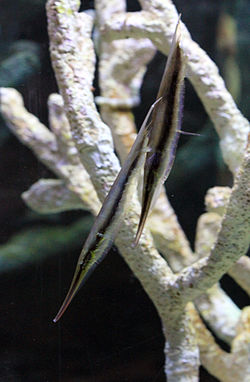| Aeoliscus Temporal range: | |
|---|---|
 | |
| Razorfish (A. strigatus) | |
| Scientific classification | |
| Kingdom: | Animalia |
| Phylum: | Chordata |
| Class: | Actinopterygii |
| Order: | Syngnathiformes |
| Family: | Centriscidae |
| Subfamily: | Centriscinae |
| Genus: | Aeoliscus D. S. Jordan & Starks, 1902 [1] |
| Type species | |
| Amphisile strigata Günther, 1861 | |
Aeoliscus is a genus of shrimpfishes found in the Indian and Pacific Oceans.